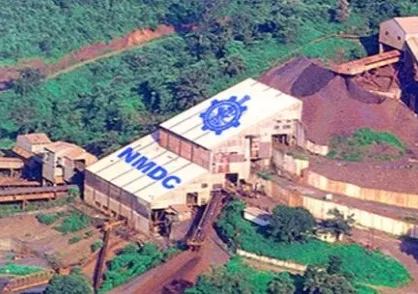Is India's mineral production on a high growth trajectory in the first two months of FY26?

Synopsis
Key Takeaways
- Iron ore production reached 53 MMT in FY 2025-26.
- Manganese ore increased by 1.4% to 0.7 MMT.
- Bauxite production rose by 0.9% to 4.73 MMT.
- Aluminium production grew by 1.3% to 7.07 LT.
- Copper production surged by 43.5% to 0.99 LT.
New Delhi, July 1 (NationPress) The output of essential minerals in India has shown remarkable growth during the initial two months of FY 2025-26, following record production levels in FY 2024-25, as per the official statistics published on Tuesday.
The production of iron ore, which constitutes 70 percent of the overall mineral output by value, has surged to 53 million metric tonnes (MMT) in FY 2025-26 (April-May), compared to 52.7 MMT during the same period of the previous fiscal year.
There has been a 1.4 percent increase in the production of manganese ore, rising to 0.7 MMT in the first two months of FY 2025-26 from 0.69 MMT in the corresponding timeframe of the last year.
Production of bauxite has also increased by 0.9 percent to 4.73 MMT in FY 2025-26 (April-May), up from 4.69 MMT during the same period in FY 2024-25. The output of zinc concentrate has escalated by 3.7 percent to 0.28 MMT in FY 2025-26 compared to 0.27 MMT in the same period last year, while limestone production rose by 1.6 percent to 81.40 MMT in FY 2025-26 (April-May) from 80.10 MMT in the same two months of the previous year.
In terms of the Index of Industrial Production for mining and quarrying for April, minerals such as Zinc Concentrate, Limestone, and Bauxite experienced significant production increases in April 2025 compared to April 2024. The production of zinc concentrate grew by 5.8 percent to 0.14 MMT, while limestone production increased by 1.2 percent to 40.1 MMT in April 2025 over April 2024. Bauxite production surged by 13.6 percent to 2.13 MMT in April 2025 compared to April 2024.
In the non-ferrous metal domain, primary aluminium production during the first two months of FY 2025-26 experienced a growth of 1.3 percent over the same period last year, rising to 7.07 lakh tonnes (LT) from 6.98 LT in the previous year's corresponding period. Meanwhile, refined copper production skyrocketed by 43.5 percent from 0.69 LT to 0.99 LT.
India ranks as the 2nd largest producer of aluminium, among the top 10 producers of refined copper, and the 3rd largest producer of iron ore globally. The ongoing growth in iron ore production in the current fiscal year highlights the strong demand conditions in the user industry, particularly in steel. Coupled with growth in aluminium and copper, these trends indicate sustained robust economic activity in key sectors such as energy, infrastructure, construction, automotive, and machinery.









